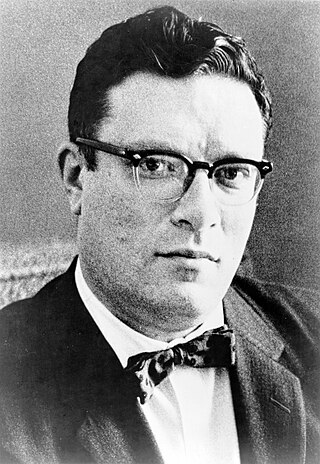
Isaac Asimov was an American writer and professor of biochemistry at Boston University. During his lifetime, Asimov was considered one of the "Big Three" science fiction writers, along with Robert A. Heinlein and Arthur C. Clarke. A prolific writer, he wrote or edited more than 500 books. He also wrote an estimated 90,000 letters and postcards. Best known for his hard science fiction, Asimov also wrote mysteries and fantasy, as well as popular science and other non-fiction.

The Caves of Steel is a science fiction novel by American writer Isaac Asimov. It is a detective story and illustrates an idea Asimov advocated, that science fiction can be applied to any literary genre, rather than just being a limited genre in itself.
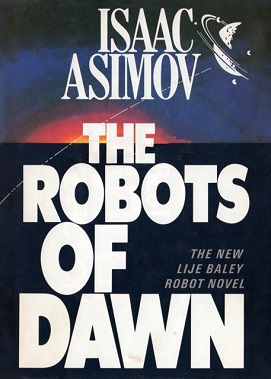
The Robot Series is a series of thirty-seven science fiction short stories and six novels created by American writer Isaac Asimov, from 1940 to 1995. The series is set in a world where sentient positronic robots serve a number of purposes in society. To ensure their loyalty, the Three Laws of Robotics are programmed into these robots, with the intent of preventing them from ever becoming a danger to humanity. Later, Asimov would merge the Robot series with his Foundation series.
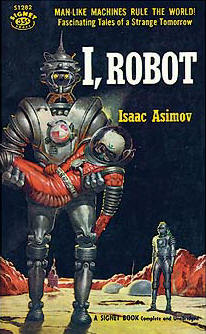
The Three Laws of Robotics are a set of rules devised by science fiction author Isaac Asimov, which were to be followed by robots in several of his stories. The rules were introduced in his 1942 short story "Runaround", although similar restrictions had been implied in earlier stories.

Nemesis is a science fiction novel by American writer Isaac Asimov. One of his later science fiction novels, it was published in 1989, three years before his death. This novel is connected to Asimov's other works by several ideas from earlier and later novels, including non-human intelligence, sentient astronomical bodies ("Hallucination"), and rotor engines.

Gardner Raymond Dozois was an American science fiction author and editor. He was the founding editor of The Year's Best Science Fiction anthologies (1984–2018) and was editor of Asimov's Science Fiction magazine (1986–2004), garnering multiple Hugo and Locus Awards for those works almost every year. He also won the Nebula Award for Best Short Story twice. He was inducted to the Science Fiction Hall of Fame on June 25, 2011.
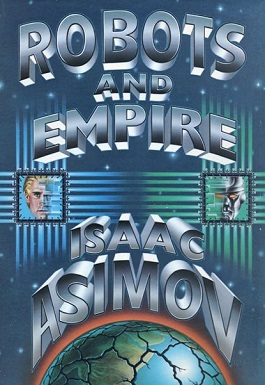
Robots and Empire is a science fiction novel by the American author Isaac Asimov, published by Doubleday Books in 1985. It is part of Asimov's Robot series, which consists of many short stories and five novels.
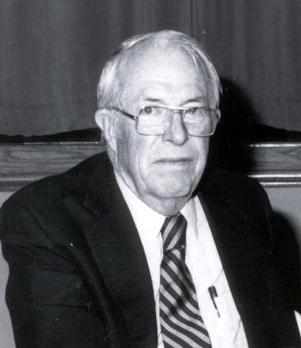
John Stewart Williamson, who wrote as Jack Williamson, was an American science fiction writer, one of several called the "Dean of Science Fiction". He is also credited with one of the first uses of the term genetic engineering. Early in his career he sometimes used the pseudonyms Will Stewart and Nils O. Sonderlund.
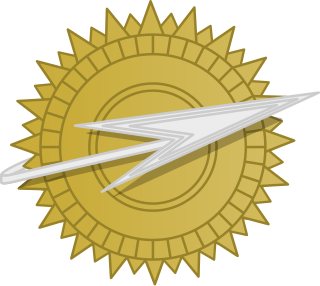
The Galactic Empire is an interstellar empire featured in Isaac Asimov's Robot, Galactic Empire, and Foundation series. The Empire is spread across the Milky Way galaxy and consists of almost 25 million planets settled exclusively by humans. For over 12 millennia the seat of imperial authority was located on the ecumenopolis of Trantor, whose population exceeded 40 billion, until it was sacked in the year 12,328. The official symbol of the empire is the Spaceship-and-Sun. Cleon II was the last Emperor to hold significant authority. The fall of the empire, modelled on the fall of the Roman Empire, is the subject of many of Asimov's novels.
This is a bibliography of the books written or edited by Isaac Asimov, arranged alphabetically. Asimov was a prolific author, and he engaged in many collaborations with other authors. This list may not yet be complete. The total number of books listed here is over 500. Asimov died in 1992 at age 72; a small number of his books were published posthumously.

Nightfall and Other Stories (1969) is a collection of 20 previously published science fiction short stories by Isaac Asimov. Asimov added a brief introduction to each story, explaining some aspect of the story's history and/or how it came to be written.
This is a list of short stories by American writer Isaac Asimov. Asimov is principally known for his science fiction, but he also wrote mystery and fantasy stories.
"Robot Dreams" is a science fiction short story by American writer Isaac Asimov exploring the unbalance of robot/human relationships under Asimov's Three Laws of Robotics. It was nominated for a Hugo Award in 1987. It won the Locus Award for Best Short Story in 1987. "Robot Dreams", along with 20 other short stories by Asimov, was published in Robot Dreams in 1986 by Berkley Books.
Artificial intelligence is a recurrent theme in science fiction, whether utopian, emphasising the potential benefits, or dystopian, emphasising the dangers.
"Farewell to the Master" is a science fiction short story by American writer Harry Bates. It was first published in the October 1940 issue of Astounding Science Fiction on page 58. It provided the basis of the 1951 film The Day the Earth Stood Still and its 2008 remake. In 1973, the story was adapted by Marvel Comics for its Worlds Unknown series. According to Gizmodo, the 1973 adaptation was more faithful to the original story than was the 1951 film.

Isaac Asimov's Robot City: Odyssey is a science fiction novel written in 1987 by Michael P. Kube-McDowell. It is part of the series Isaac Asimov's Robot City, inspired by Isaac Asimov's Robot series. The 1995 computer game Robot City is based on the plot of Odyssey.

Clifford Donald Simak was an American science fiction writer. He won three Hugo Awards and one Nebula Award. The Science Fiction Writers of America made him its third SFWA Grand Master, and the Horror Writers Association made him one of three inaugural winners of the Bram Stoker Award for Lifetime Achievement. He is associated with the pastoral science fiction subgenre.
The Foundation universe is the future history of humanity's colonization of the galaxy, spanning nearly 25,000 years, created through the gradual fusion of the Robot, Galactic Empire, and Foundation book series written by American author Isaac Asimov.
In a writing career spanning 53 years (1939–1992), science fiction and popular science author Isaac Asimov (1920–1992) wrote and published 40 novels, 383 short stories, over 280 non-fiction books, and edited about 147 others.
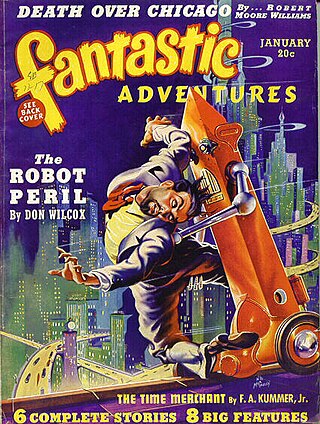
AI takeover—the idea that some kind of artificial intelligence may supplant humankind as the dominant intelligent species on the planet—is a common theme in science fiction. Famous cultural touchstones include Terminator and The Matrix.













